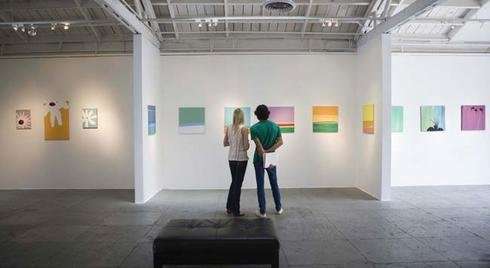New study finds artwork is worth 35 percent less when created by 'tortured' artists

The term 'tortured artists' has been used to describe some of history's greatest painters, from Vincent Van Gogh and Henri de Tolousse-Lautrec to Pablo Picasso and Jackson Pollock. They are credited with creating some of the world's most recognized works of art despite lives that were often characterized by great emotional unrest and personal unhappiness. But does misery really beget valuable works of art? According to a new study in the INFORMS journal Management Science, personal unhappiness, particularly that experienced in times of mourning or bereavement, can actually cause a significant decrease in the value of an artist's work.
The study, "Death, Bereavement, and Creativity," was conducted by Kathryn Graddy of Brandeis University and Carl Lieberman of Princeton University. The authors studied the prices of more than 10,000 paintings produced by 33 French impressionist artists and more than 2,000 paintings by 15 American artists born between 1900 and 1920, and their relation to the dates of death of the artists' friends and family members.
By looking at the sale and auction price of these artists' works from 1972 to 2014, the authors found that any paintings created in the year following the death of a friend or relative saw a decrease in value of about 35 percent compared to the rest of the artist's catalog. The authors also found that there was no statistically significant difference in terms of whether the death involved a parent, a sibling, or a friend, and this decrease in the value of their work typically did not extend beyond that one-year time frame.
In addition to studying the impact of bereavement on the cost of paintings, the authors also reviewed the likelihood of a painting being included in a museum collection. By gathering information on all paintings created by the artists included in the study that are in the collections of the New York Metropolitan Museum of Art, the Art Institute of Chicago, the National Gallery of Art, the J. Paul Getty Museum, and the Musée d'Orsay, the authors found that artwork painted in the first year following the death of a spouse, child, sibling, or friend were much less likely to be included in a museum collection.
"Our analysis reflects that artists, in the year following the death of a friend or relative, are on average less creative than at other times in their lives," said Graddy. "Paintings that were created in the year following a death fetch significantly less at auction than those created at other times in an artist's life, and are significantly less likely to be included in a major museum's collection."
More information: Kathryn Graddy et al. Death, Bereavement, and Creativity, Management Science (2017). DOI: 10.1287/mnsc.2017.2850
Journal information: Management Science



















